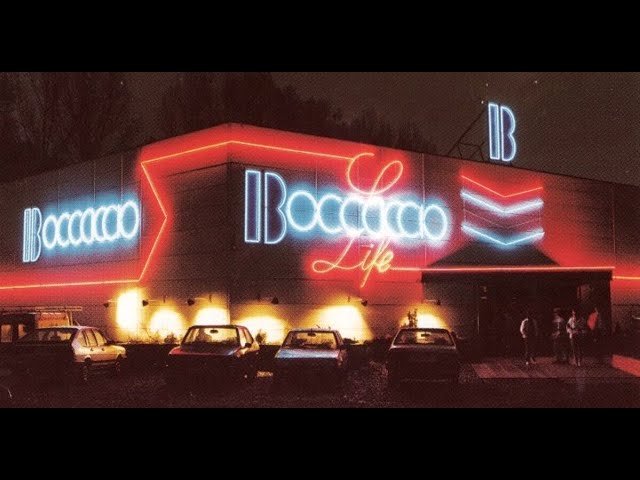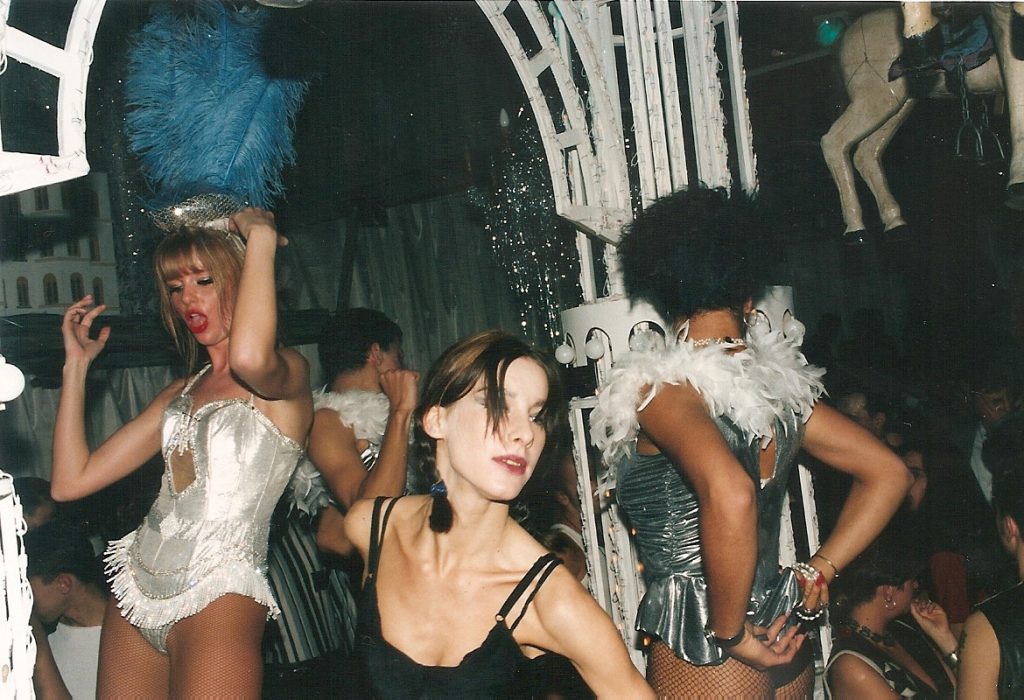
Hypnotised – A Journey Through Trance Music’s Arjan Rietveld Talks ‘Belgium’, Ahead Of The Series’ 4th Release
https://www.edmtunes.com/wp-content/uploads/2024/05/Hypnotised-A-Journey-Through-Belgian-Trance-Music-1992-2003-696x696.jpg
In trance music’s alphabet, G is for Germany, while H could only ever count for Holland … ports-of-call already made by the Hypnotised album series. When it comes to Britain though (likewise touched on in 2023), it has to share its B with another. Despite its neatly compact size, Belgium’s left an outsized impression on the genre, and that’s where Hypnotised’s roots-to-musical-riches ‘Journey Through Trance’ series arrives on June 7. Meticulously detailing the impact the country had on the scene, over the course of 25+ tracks it highlights nine of the most momentous years in Belgium’s electronic music history.
The fourth album in the series is again compiled by Arjan Rietveld, author of its encyclopaedic companion book, Hypnotised: A Journey Through Trance Music 1990 – 2005. Here, writing exclusively for EDMTunes, Arjan talks about how Belgium so capably rivalled the giants.
Belgian trance scene
Counting a population of nearly 12 million and caught in between nations with strong music cultures, it may come as no surprise that Belgium played an instrumental role in the development of electronic music. Here’s a brief history on its evolution as a powerhouse for trance.
The rise of new beat
Following the developments of electronic music in the United States – notably the New York and Chicago house scenes as well as the rise of Detroit techno in the eighties, Belgian new beat caused a slowdown on dance floors across the country. Being a lower-pitched cross-over between acid house and electronic body music (EBM), the underground subculture associated with new beat was particularly thriving during the 1987-1988 period.
These early movements – house, new beat and techno – attributed the first forms and incarnations of trance-engineered music that emerged in the early nineties. Belgians eagerly picked up on early developments that took place nearby – most notably in Berlin and Frankfurt. Also, the leap from new beat to this more hypnotic club sound felt like a natural progression. It didn’t take long until the country developed its own take on electronic music.
Early imprints
The nineties were marked by innovation and experimentation within the realms of electronic music. In Belgium, Ghent-based imprint R&S was at the forefront of it all. Founded by Renaat Vandepapeliere and Sabine Maes in 1983, the label’s roster reads like the who’s who of the early scene – featuring appearances from high-profile international artists such as Aphex Twin, Model 500, System 7, Dave Angel and Ken Ishii. The 1992 single “Camargue” by Belgian artist C.J. Bolland is a prime example of the early fusion of electronic music genres.

(Above, R&S’s legendary C.J. Bolland)
Another prime example was Antwerp’s Bonzai Records, which was established by Christian Pieters in 1992. The imprint initially functioned as an extension of his record shop called Blitz, as an outlet for the productions of his most trusted customers. Not long after, a studio space erected in the back of the shop – where local producers such as Airwave, DJ Bountyhunter and Yves Deruyter started to record their works. Pieters oversaw that the sound fitted his vision, which resulted in a unique, more rave-directed sound palette. One track that brought the label to global attention was 1993’s “The First Rebirth” by Jones & Stephenson.

Club life
In accordance with the formation of these first Belgian record labels and hits, the country’s club culture burgeoned around that same time – birthing a trance revolution that reverberated beyond its borders. At the forefront of this sonic uprising were iconic venues like Bocaccio, Cherry Moon and La Rocca, each a beacon of hedonism and musical innovation in their own right.

Bocaccio, nestled in the industrial outskirts of Ghent, became a mecca for trance enthusiasts with its electrifying atmosphere and pioneering DJ sets. Meanwhile, Cherry Moon in Lokeren pulsated with its neon-lit dance floors, drawing revelers into a euphoric trance with its pounding beats. La Rocca, situated in the picturesque town of Lier, elevated the clubbing experience with its luxurious ambiance and eclectic mix of trance and house music. Together, these clubs formed the backbone of Belgium’s vibrant club scene – which also appealed to visitors from neighbouring countries. For example, Dutch artist Tiësto was inspired by his trips to Belgium early on in his career to further pursue his interest in trance.
(Above Boccacio, Ghent; below, La Rocca, Lier)

Commercial appeal
By the late nineties, trance had established itself as a major force in the European club circuit. Belgian imprints such as Antler Subway, Dance Opera and N.E.W.S. noticed the potential of trance – and initiated subsidiary labels to cater for this newfound sound.
Dance Opera was a strong purveyor of promoting Belgian club life, with a strong lineup of domestic artists such as Johan Gielen and Sven Maes pushing a more widely appealing sound. The duo produced tracks under various monikers, including Airspace, Boccaccio Life and Maes’ solo project Svenson – with each project reaching favourable success. Meanwhile, N.E.W.S. – Belgium’s largest independent music distributor – ran a string of in-house imprints that catered to different genres. With its labels Yeti and Yris, the distributor introduced appealing trance releases from abroad to Belgium, while also crafting a stage for domestic acts such as Frank Biazzi, Filterheadz and Mr Sam.

(Above: Svenson & Gielen)
By the turn of the century, international media picked up on the growth and increasingly important place taken by electronic music and club culture in the life of the younger generation. The commercial success of independent labels didn’t pass unnoticed with the major record labels. Brussels’ Antler Subway was at the forefront of this movement, After its establishment as Antler Records in 1984, the imprint turned into a subsidiary of major label EMI by 1995.
Backed with these financial means, Antler Subway went on to produce Belgian acts with mainstream hit potential, such as Ian Van Dahl, Kate Ryan, Lasgo, Milk Inc. and Sylver. With their pop-like structures, female vocals and euphoric synthesizer sounds, these acts quickly captured an international audience. Under the banner of trance, commercialism capitalised on a once-underground sound.
Aftermath
By the end of the decade, the clubs that initially formed the backbone of Belgium’s vibrant trance scene had lost much of their prominence. Regulatory pressures, changing tastes and the emergence of new genres in electronic music led to the decline of the once-thriving trance era.
In the aftermath of this commercial boom, independent labels also moved on. Bonzai’s Christian Pieters was one of those left the trance scene: “I started struggling with the genre back in 2002 or 2003, which became noticeable in the releases we put out in the following years. Around 2006, it became clear to me and my associate that we needed a big change to actually enjoy ourselves again, which was – and still is – working in the music business and running labels.”
These days, many of the originators of the Belgian trance scene are back on track. Record labels such as Bonzai, N.E.W.S. and R&S still release new material as well as their classic releases. Yet, much has changed compared to the early days. Pieters: “Today, our trance department is handled by label managers and represents just a very small part of the genres we put out.” Pieters’ words echo the state of electronic music today, which can be seen as a versatile palette of sounds that reaches far beyond the sound of trance. Having said that, trance still has its place within that wider spectrum – also in Belgium.
Through one album, nine labels and twenty-seven tracks, ‘Hypnotised: A Journey Through Belgium Trance Music’ brings the country’s golden years vividly back to life. Find it through all good physical, digital and streaming channels here [https://blackhole.lnk.to/hypnotised4PR].
Tracklist:
CD 01 – R&S / Dance Opera / Bonzai
01. Digital Excitation – Pure Pleasure
02. Sonic Solution – Arab Girl
03. CJ Bolland – Camargue
–
04. Requiem featuring Chiara Gio – Virtual Love (First Abduction Mix)
05. Airscape – L’Esperanza
06. Boccaccio Life – The Secret Wish (Club Mix)
–
07. Space Module – Dreamworld
08. Blue Alphabet – Cybertrance
09. Jones & Stephenson – The First Rebirth
CD 02 – Anaconda / S5 Red Active / XTC
01. DJ Wout – Endless Road
02. Perfect Sphere – Different Glow (Original Vocal Mix)
03. DJ Philip – Feelings
–
04. Enforcer – Searchin’ 4 Love
05. Allegro – Moments In Love
06. Osaka 2 – Shinkansen Express 2000 (Full Trance Mix)
–
07. M.I.K.E. – Sunrise at Palamos
08. Extreme Trax – Final Fantasy (Remastered Original Mix)
09. Fire & Ice – Souvenir De Chine
CD 03 – Yeti / Camouflage / Green Martian
01. Filterheadz – Blue Car
02. Sinesweeper – Eyes Wide Open
03. Sloane Strangers – Mind Over Matter
–
04. The Snapper – Pulsar
05. Jericho – Way Of Love!
06. Cosmo Kid – Cosmic Meltdown
–
07. Velvet Girl – Velvet (Remastered Vocal Club Mix)
08. V-One – Dead Cities (Remastered Original Mix)
09. Planisphere – Deep Blue Dream (Remastered Original Mix)
blackholerecordings.com
instagram.com/blackholerecordings
soundcloud.com/blackholerecordings
facebook.com/blackholerecordings
twitter.com/BlackHoleRec
Add link


